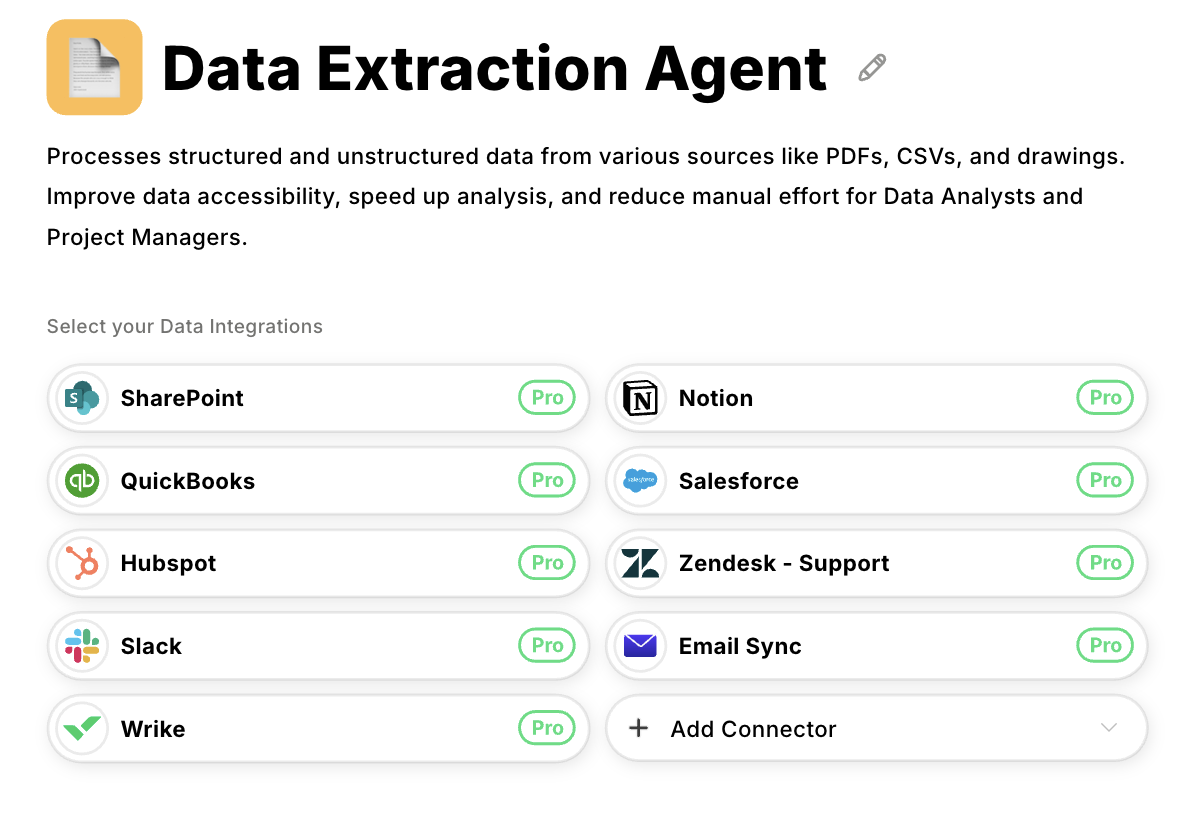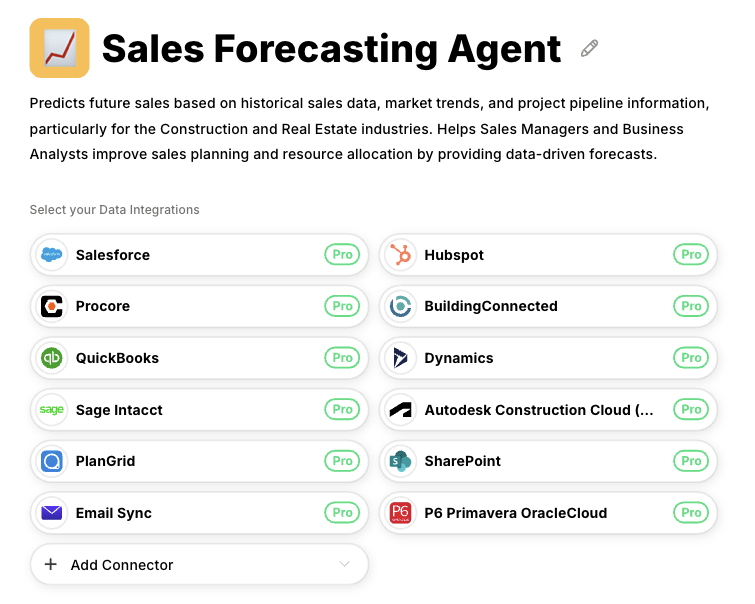Five common prospect enrichment mistakes with manual processes and how AI agents automate data collection and quality for sales ops teams.
Manual prospect enrichment is like a financial hot potato for sales ops; the longer it takes, the more likely it is to burn something: your pipeline quality, data accuracy, or your team's productivity.
When you're managing prospect enrichment for a growing sales team, manual research creates bottlenecks that turn into poor data quality and missed opportunities.
While you're spending three hours researching one prospect thoroughly, fifty more leads arrive in your queue. Rush through enrichment to keep pace, and sales reps work with incomplete data that tanks their outreach performance.
Automation helps. AI agents can pull information from LinkedIn, company websites, and business databases at the same time, freeing up your team for higher-value work. But most sales ops teams still enrich prospects manually, dealing with the same predictable problems.
Here are five common enrichment mistakes that happen with manual processes, and how automation fixes them.
Mistake #1: Incomplete or Outdated Prospect Research
Proper prospect research takes 2-3 hours per lead. You check LinkedIn for their current role and background, visit the company website for firmographics, and scan recent news for funding or leadership changes. Then you review their tech stack on BuiltWith and search Crunchbase for financial history.
It's a comprehensive work, but when you're managing hundreds of leads monthly, that timeline becomes unsustainable.
The math doesn't work. A three-person sales ops team has roughly 480 working hours per month. If leadership wants 300 leads enriched and each one takes 2-3 hours of proper research, you're looking at 600-900 hours of work. Something has to give.
Teams start making trade-offs. A job title gets pulled from LinkedIn, and the research ends there. Company background work gets deferred indefinitely. Tech stack fields stay empty because there's always another lead waiting in the queue.
Sometimes teams invest time in thorough research in January, but by June, nobody has circled back to update it. The data sits in your CRM slowly aging out while prospects change roles, companies shift strategies, and tech stacks evolve.
Human researchers can only move so fast, and they can't monitor hundreds of prospects for changes while simultaneously enriching new ones.
The problems cascade through your pipeline. Your reps send emails to prospects who left their companies months ago. They jump on discovery calls without knowing the prospect's tech stack, so conversations about how your product integrates or fits their environment go nowhere.
But thankfully, there's a solution, an agentic AI that handles the research grunt work automatically.
Datagrid's AI agents pull information from 100+ data sources at once. LinkedIn, company websites, BuiltWith, Crunchbase, news feeds, all gathered in a single automated process.
Agentic AI uses continuous monitoring to track changes in real-time, so when prospects switch roles or companies get acquired, those updates flow into your CRM automatically rather than waiting for quarterly manual refresh cycles.
Mistake #2: Quantity Over Quality Trade-offs
Volume-pressure forces lead to impossible choices in manual enrichment. When lead flow exceeds your team's research capacity, something has to give, either coverage or quality.
Leadership wants 500 leads enriched this month. Your team can do maybe 200 properly. So you make a choice: either thoroughly enrich 200 leads and leave 300 untouched, or rush through all 500 and accept that the data quality won't be excellent.
Most teams choose volume. They have to. Sales reps need leads to work, and an incomplete record is better than no record at all. But rushing through enrichment creates its own set of problems.
Fields get half-completed. Someone copies a job title from LinkedIn but doesn't verify it against the company website. Company size gets estimated instead of confirmed.
The tech stack gets a glance rather than thorough documentation. Revenue figures get rounded to the nearest hundred. The goal shifts from "get it right" to "get it done."
Verification gets skipped entirely. When you're racing through prospects, you don't cross-reference information across multiple sources. You grab what looks right from the first place you find it and move on.
If LinkedIn says someone is a VP of Sales, that's what goes in the CRM, even if their actual title on the company website is Director of Business Development.
Copy-paste errors multiply. You're moving fast, switching between tabs, and occasionally pasting the wrong company's data into the incorrect record. Or you copy last year's revenue figure instead of this year's. Small mistakes that wouldn't happen if you had more time.
This is what happens when manual processes hit volume pressure. Datagrid's AI agents handle this differently. They pull from 100+ sources at once, so there's no rushing or corner-cutting.
The system cross-references information automatically. If LinkedIn shows one title and the company website shows another, it flags the discrepancy rather than picking one.

Mistake #3: Unused Enrichment Data
Sales ops spends weeks enriching the profiles of hundreds of prospects. Job titles, company size, tech stack, recent funding, growth indicators, all there in the CRM. Then, sales reps send the same generic email template they've used for months.
"Hi [First Name], I wanted to reach out about our solution and see if you'd be open to a quick call."
Templates become the default. Maybe they swap in the company name and job title, the personalization tokens every email tool handles automatically.
But deeper intelligence about funding, tech stack compatibility, or growth trajectory stays buried in CRM fields because there's no time to translate it into messaging at scale.
There's also the question of what to prioritize. A prospect's record might have 15 enriched fields, but which ones matter for this specific outreach? Should you lead with their recent funding round, their tech stack, or their company's expansion plans?
Reps would need to analyze each prospect's situation to figure out which talking point resonates most, and that analysis doesn't happen when you're trying to send 30 emails before lunch.
The disconnect between what gets collected and what gets used means prospects receive the same generic pitch as everyone else. Meanwhile, your competitors who've figured out how to leverage enrichment data are getting higher response rates with messaging that feels relevant.
The gap between enriched data and personalized messaging needs to be automated. You can use pre-built AI agents to gather all the relevant context and automatically incorporate it into messaging.
Mistake #4: Duplicate Records from Format Variations
Manual data entry creates variations that fragment your prospect database. One person enriches a prospect and enters "VP of Sales" as the title. Another person enriches a different contact at the same company and writes "Vice President, Sales."
A third uses "VP - Sales." Your CRM now has three separate entries that should probably be standardized, or worse, three records for the same person.
Company names suffer the same problem. "IBM" versus "International Business Machines" versus "IBM Corporation." "Microsoft" versus "Microsoft Corp" versus "MSFT."
When five different people enrich prospects over several months, each one formats company names slightly differently based on what they see first or personal preference.
The duplicates multiply quickly. Someone enriches a prospect in January using their LinkedIn information.
Three months later, a different team member enriches what appears to be a new lead, but is actually the same person with a slightly different email format or updated job title. Now you have two CRM records for one prospect, each with partial information that doesn't match the other.
Lead routing breaks down because assignment rules can't recognize format variations. Scoring algorithms treat "VP Sales" and "Vice President of Sales" as different values. Reports show inflated prospect counts. Sales reps contact the same person twice from different records.
Deduplication projects get scheduled, but rarely happen because new lead enrichment always takes priority. This cleanup backlog is a symptom of manual processes that can't maintain consistency at scale.
Datagrid's AI agents handle formatting standardization as part of the enrichment process. When the system pulls data, it recognizes that "Microsoft," "Microsoft Corp," and "MSFT" all refer to the same company and automatically applies consistent formatting.
Mistake #5: One-Size-Fits-All Enrichment
Your team treats all incoming leads equally. A 10-person startup gets the same level of enrichment as a Fortune 500 enterprise account. Prospects in industries you've never sold to get researched as thoroughly as your best-fit verticals.
Every lead in the queue receives the same data-collection treatment, regardless of whether they actually match your ideal customer profile.
This happens because manual enrichment becomes purely reactive. Leads come in, someone grabs the next one in the queue and starts researching.
There's no time to step back and ask, "Should we even be spending two hours on this lead?" or "Does this company actually fit our ICP?" The goal is just to get through the backlog.
You end up enriching prospects you'll never close. That startup with 10 employees, when your product requires 200+ to make economic sense. The company is in an industry where you have zero case studies or relevant experience.
The lead from a region where you don't have sales coverage. Hours are burned on research that yields, ideally, enriched records for fundamentally unqualified prospects.
There's also the problem of collecting data nobody uses. Your enrichment process gathers 15 data points per prospect because that's what the checklist says. But realistically, only five of those fields ever influence qualification decisions or personalization.
You're spending time documenting company founding dates, employee headcount growth rates, and social media presence when none of that actually impacts whether deals close.
When you're drowning in manual work, strategic thinking gets pushed aside. Nobody has the bandwidth to analyze which enriched fields correlate with closed deals or which prospect segments actually convert.
Automation creates space for strategy. When AI agents handle execution, your team can focus on defining which prospects deserve deep enrichment and which data points actually matter.

Automate Prospect Enrichment With Datagrid
Manual enrichment creates the bottleneck that determines how many leads your sales team can work on. When research takes 2-3 hours per prospect, you're forced to choose between leaving leads unqualified or rushing through enrichment and filling your CRM with incomplete data.
Datagrid's AI agents handle this bottleneck.
- Process prospects at scale without sacrificing quality: Enrich 1,000+ prospects overnight while your team focuses on strategic work, eliminating the volume-versus-quality tradeoff that manual processes force.
- Pull from 100+ data sources simultaneously: What takes hours of manual platform-hopping happens automatically in minutes. LinkedIn, company websites, BuiltWith, Crunchbase, news feeds, all gathered in one pass.
- Keep data current with continuous monitoring: Agents track job changes, company acquisitions, and tech stack shifts in real-time. Updates flow into your CRM automatically, rather than decaying between quarterly manual refreshes.
- Maintain consistent data quality across your database: Automated formatting eliminates duplicates and variations. Your CRM stays clean without requiring manual deduplication projects.
- Expand enrichment capacity without adding headcount: Teams that enriched 200 leads monthly can handle 500+ because research speed no longer constrains capacity.
Ready to deploy AI agents that transform your prospect enrichment process?










